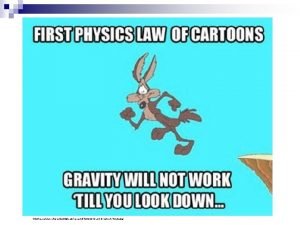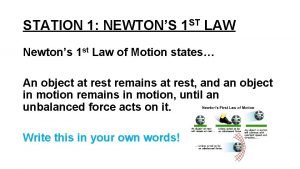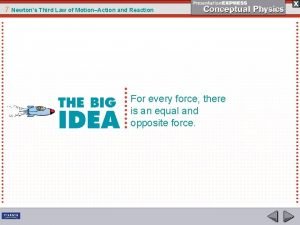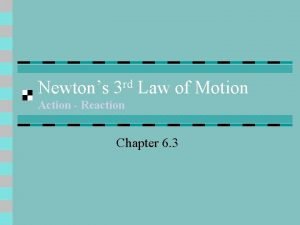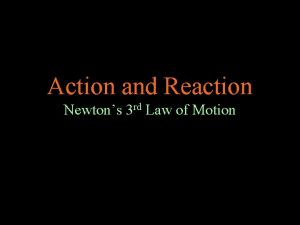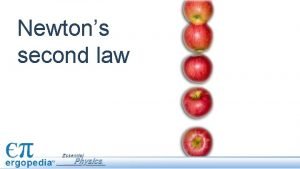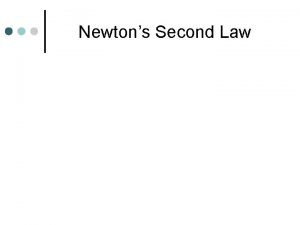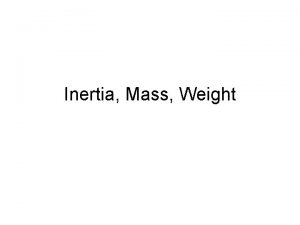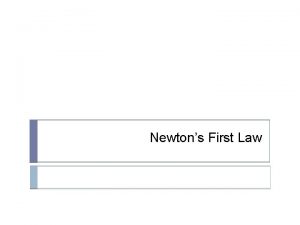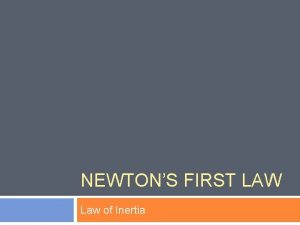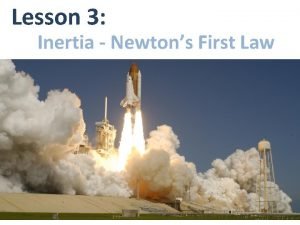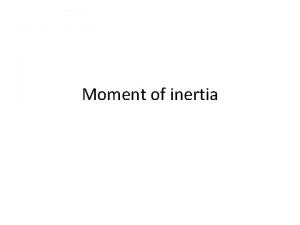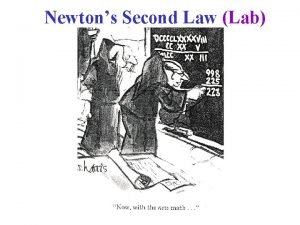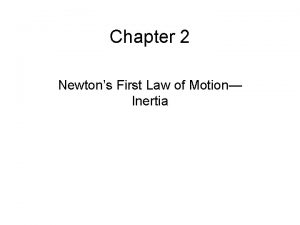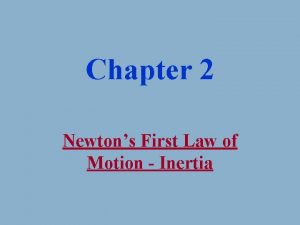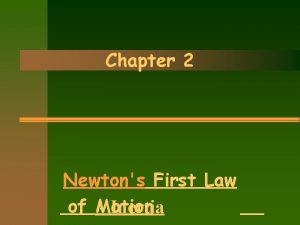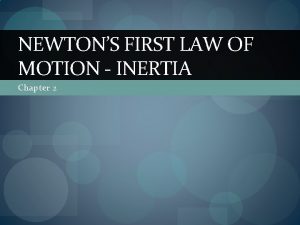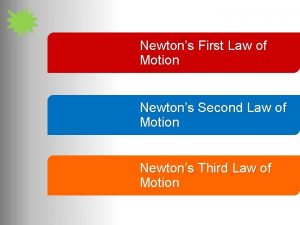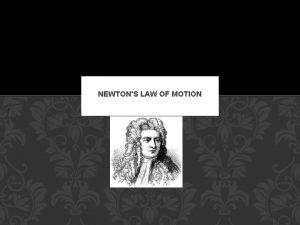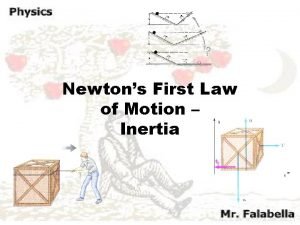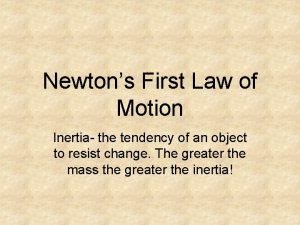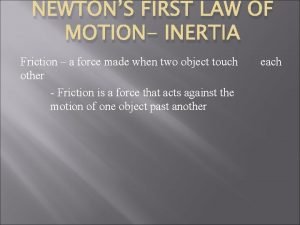Chapter 4 Newtons First Law of Motion Inertia






















- Slides: 22

Chapter 4 Newton's First Law of Motion - Inertia

1. ARISTOTLE ON MOTION Aristotle attempted to understand motion by classification. Two Classes: Natural and Violent

Natural motion depended on nature of the object. Examples: A rocks falls Smoke rises

The falling speed of an object was supposed to be proportional to its weight. Natural motion could be circular (perfect objects in perfect motion with no end).

Violent Pushing or pulling forces imposed motion. Some motions were difficult to understand. Example: the flight of an arrow There was a normal state of rest except for celestial bodies.

Aristotle was unquestioned for 2000 years. Most thought that the Earth was the center of everything for it was in its normal state. No one could imagine a force that could move it.

2. COPERNICUS AND THE MOVING EARTH Sun was center, not earth. He was hesitant to publish because he didn't really believe it either. De Revolutionibus reached him on the day he died, May 24, 1543.

3. GALILEO AND THE LEANING TOWER 17 th Century scientist who supported Copernicus. He refuted many of Aristotle's ideas. Worked on falling object problem used experiment.

4. GALILEO'S INCLINED PLANES Knocked down Aristotle's push or pull ideas. Rest was not a natural state. The concept of inertia was introduced. Galileo is sometimes referred to as the “father of experimentation. ”

He tested with planes. The change in speed depended on the slope of the incline.


5. NEWTON’S FIRST LAW OF MOTION Newton finished the overthrow of Aristotelian ideas. Law 1 (Law of Inertia) Every object continues in its state of rest, or of uniform motion in a straight line, unless it is compelled to change that state by forces impressed upon it. “If you leave an object alone, it has constant velocity. ”

6. NET FORCE A force or a combination of forces produces changes in motion (accelerations). 10 N 20 N m = m 10 N = m 20 N 0 N 10 N m m

7. THE EQUILIBRIUM RULE Examples of Mechanical Equilibrium: Computer setting on a table Scales pushing up Normal up Weight down Weighing yourself on a set of scales Hanging from a tree Car parked on an incline Friction Tree pulling up Weight down Normal Weight down

The Equilibrium Rule

8. SUPPORT FORCE In the first example of mechanical equilibrium the table supplied a force upward that was called the normal force. It is a support force. Consider the second example of mechanical equilibrium. The scales supply a support force on the man. Normal up Scales pushing up Weight down

9. EQUILIBRIUM OF MOVING THINGS Equilibrium is a state of no change. If an object moves in a straight line with no change in speed, it is in equilibrium. Examples: Driving at constant velocity Normal up Air resistance Force from road Air Resistance Weight down Terminal velocity in parachuting Weight down

10. THE MOVING EARTH It is hard to detect the motion of the earth because we are moving with it. Early science could not predict large enough forces to move the earth. Can Hewitt’s bird drop down and catch the worm if the Earth moves at 30 km/s? Demo – Ballistics Cart

Chapter 2 Review Questions

Which person below is most highly recognized for proposing a heliocentric universe? (a) Aristotle (b) Newton (c) Galileo (d) Copernicus

If an object weighs 10 N, what must the air resistance force be if the object is falling and has reached terminal velocity? (a) 10 N (b) 32 N (c) there is no way of telling without knowing what the value of the terminal velocity is

Newton's concept of motion said that the natural state of an object was (a) constant velocity (b) constant acceleration (c) constant net force
 Newton's first law of motion meme
Newton's first law of motion meme Newtons first law
Newtons first law Newtons 3 rd law of motion
Newtons 3 rd law of motion Newtons 3 rd law of motion
Newtons 3 rd law of motion Third
Third Rd law
Rd law Newtons third law of motion
Newtons third law of motion Newton's third law
Newton's third law Newtons 3 rd law of motion
Newtons 3 rd law of motion Newtons 3 rd law of motion
Newtons 3 rd law of motion Newtons 3 rd law of motion
Newtons 3 rd law of motion Application of newton's law
Application of newton's law Second law of newton definition
Second law of newton definition Brainpop newton's laws of motion worksheet answer key
Brainpop newton's laws of motion worksheet answer key Define inertia
Define inertia Facts about newtons first law
Facts about newtons first law What is motion
What is motion Newton's first law and second law and third law
Newton's first law and second law and third law Newton's first law and second law and third law
Newton's first law and second law and third law Colin skateboards down the sidewalk
Colin skateboards down the sidewalk Newtons third lw
Newtons third lw Law of newton 3
Law of newton 3 Newton's 3 laws names
Newton's 3 laws names
